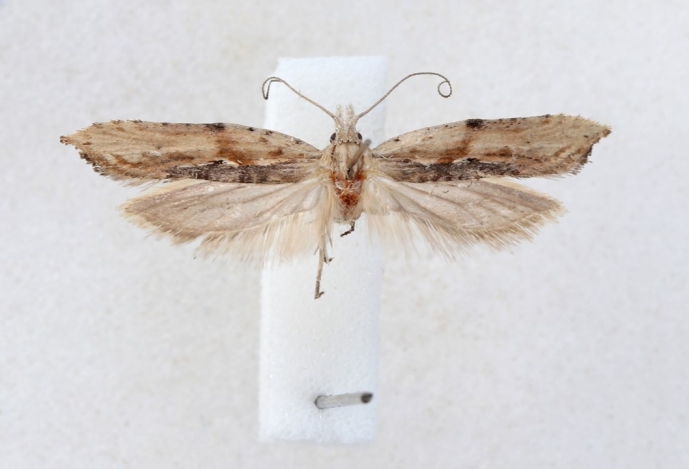A new species of moth discovered in Portugal

The description of a new species of moth from Portugal by CIBIO-InBIO researchers has featured widely in the media.
Ypsolopha milfontensis is the name of the new species described from the coast of south-west Portugal where its host plant is Ephedra fragilis Desf. This new species of Lepidoptera is closely related to Ypsolopha instabilella (Mann, 1866), but with some differences externally, in male and female genitalia and a significant difference in DNA barcode.
With the present work the number of Portuguese Ypsolopha species is raised to seven. Currently, the distribution known of this species is limited to a single site at Vila Nova de Milfontes, Beja, Portugal, in contrast with Y. instabilella which has a wide distribution from southern Spain, into central Asia.
This new species may already be threatened by the disappearance of its host plant, which has suffered a major reduction in population in recent years and is classified as "Vulnerable" in the Red List of Vascular Plants of Mainland Portugal. Further research is needed to understand its conservation status.
To see some examples of the news please click on the links below:
"Descoberta nova espécie de borboleta nocturna no Alentejo” | Público | April 08, 2021
"Investigadores descobrem nova espécie de borboleta noturna no sudoeste alentejano” | Diário de Notícias | April 08, 2021
"Nova espécie de borboleta noturna encontrada no sudoeste alentejano” | Jornal de Notícias | April 08, 2021
"Investigadores descobrem nova espécie de borboleta noturna no sudoeste alentejano” | SIC Notícias | April 08, 2021
"Investigadores descobrem nova espécie de borboleta noturna no sudoeste alentejano” | RTP Notícias | April 08, 2021
"Eles descobriram uma nova espécie de borboleta em Portugal. E no mundo” | Wilder | April 08, 2021
"Investigadores do CIBIO-InBIO descobrem nova espécie de borboleta na costa alentejana” | Notícias UP | April 08, 2021
To read the national press release for this study, please click here.
To access the original article, please click here.